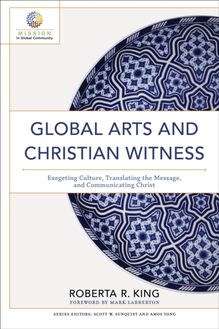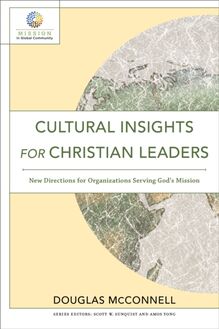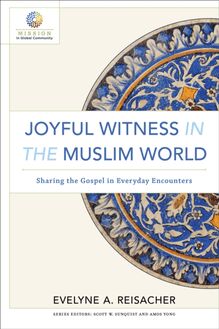Joyful Witness in the Muslim World (Mission in Global Community) , livre ebook
150
pages
English
Ebooks
2016
Vous pourrez modifier la taille du texte de cet ouvrage
Obtenez un accès à la bibliothèque pour le consulter en ligne En savoir plus
Découvre YouScribe et accède à tout notre catalogue !
Découvre YouScribe et accède à tout notre catalogue !
150
pages
English
Ebooks
2016
Vous pourrez modifier la taille du texte de cet ouvrage
Obtenez un accès à la bibliothèque pour le consulter en ligne En savoir plus
Publié par
Date de parution
20 septembre 2016
Nombre de lectures
2
EAN13
9781493403691
Langue
English
Poids de l'ouvrage
1 Mo
Publié par
Date de parution
20 septembre 2016
EAN13
9781493403691
Langue
English
Poids de l'ouvrage
1 Mo
Cover
Series Page
S COTT W. S UNQUIST AND A MOS Y ONG , SERIES EDITORS
The Mission in Global Community series is designed to reach college students and those interested in learning more about responsible mission involvement. Written by faculty and graduates from Fuller Theological Seminary, the series is designed as a global conversation with stories and perspectives from around the world.
Title Page
Copyright Page
© 2016 by Evelyne A. Reisacher
Published by Baker Academic
a division of Baker Publishing Group
P.O. Box 6287, Grand Rapids, MI 49516–6287
www.bakeracademic.com
Ebook edition created 2016
All rights reserved. No part of this publication may be reproduced, stored in a retrieval system, or transmitted in any form or by any means—for example, electronic, photocopy, recording—without the prior written permission of the publisher. The only exception is brief quotations in printed reviews.
Library of Congress Cataloging-in-Publication Data is on file at the Library of Congress, Washington, DC.
ISBN 978-1-4934-0369-1
Scripture quotations labeled KJV are from the King James Version of the Bible.
Scripture quotations labeled NASB are from the New American Standard Bible®, copyright © 1960, 1962, 1963, 1968, 1971, 1972, 1973, 1975, 1977, 1995 by The Lockman Foundation. Used by permission. ( www.Lockman.org )
Scripture quotations labeled NIV are from the Holy Bible, New International Version®. NIV®. Copyright © 1973, 1978, 1984, 2011 by Biblica, Inc.™ Used by permission of Zondervan. All rights reserved worldwide. www.zondervan.com
Scripture quotations labeled NKJV are from the New King James Version®. Copyright © 1982 by Thomas Nelson, Inc. Used by permission. All rights reserved.
Scripture quotations labeled NRSV are from the New Revised Standard Version of the Bible, copyright © 1989, by the Division of Christian Education of the National Council of the Churches of Christ in the United States of America. Used by permission. All rights reserved.
Scripture quotations labeled RSV are from the Revised Standard Version of the Bible, copyright 1952 [2nd edition, 1971] by the Division of Christian Education of the National Council of the Churches of Christ in the United States of America. Used by permission. All rights reserved.
Dedication
To my family, friends, colleagues, and students throughout the Muslim world with whom I have experienced countless moments of joy
Contents
Cover i
Series Page ii
Title Page iii
Copyright Page iv
Dedication v
Series Preface ix
Acknowledgments xi
Introduction xiii
1. Toward Joyful Witness 1
2. Muslim-Christian Attachment 21
3. Connecting with iMuslims 43
4. Joyful Witness through Art 65
5. Thinking Green in Sharing the Gospel 87
6. Caring for the Needy 109
7. Meeting Muslim Urbanites 131
8. Theological Conversations 155
Conclusion 177
Index 183
Back Cover 189
Series Preface
A mission leader in 1965, not too long ago, could not have foreseen what mission looks like today. In 1965 nations in the non-Western world were gaining their independence after centuries of Western colonialism. Mission societies from Europe and North America were trying to adjust to the new global realities where Muslim nations, once dominated by the West, no longer granted “missionary visas.” The largest mission field, China, was “closed.” Decolonization, it seemed, was bringing a decline to missionary work in Africa and Asia.
On the home front, Western churches were in decline, and the traditional missionary factories—mainline churches in the West—were struggling with their own identity. Membership was then—and remains—in decline, and missionary vocations were following the same pattern. Evangelical and Pentecostal churches began to surpass mainline churches in mission, and then, just when we thought we understood the new missionary patterns, Brazilians began to go to Pakistan and Malaysians began to evangelize Vietnam and Cambodia. Africans (highly educated and strongly Christian) began to move in great numbers to Europe and North America. Countries that had been “closed” began to have large movements to Christ, without the aid of traditional mission societies. And in the midst of this rapid transformation of missionary work, the alarm came out that most of the Christians in the world were now in Asia, Latin America, and Africa rather than in the West.
What does it mean to be involved in mission in this new world where Christianity has been turned upside down in less than a century?
This series is directed at this new global context for mission . Fuller Theological Seminary, particularly through its School of Intercultural Studies (formerly School of World Mission), has been attentive to trends in global mission for over half a century. In fact, much innovation in mission thinking and practice has emanated from Fuller since Donald McGavran moved from Oregon to California—as the first and founding dean of the then–School of World Mission—to apply lessons about church growth learned in India to other areas of the world. Since that time many creative mission professors have provided global leadership in mission thinking: Ralph Winter (unreached people groups), Paul Hiebert (anthropology for mission), Charles Kraft (mission and spiritual dynamics), and Dudley Woodberry (Islamics), among others.
This series provides the most recent global scholarship on key themes in mission, written for a general audience of Christians committed to God’s mission. Designed to be student, user, and textbook friendly, each volume contains voices from around the world speaking about the theme, and each chapter concludes with discussion questions so the books can be used for group studies. As the “fields” of mission are changing, shifting, and “shrinking,” the discussions connect the church and the world, East and West, North and South, the developed and developing worlds, each crossing cultural, political, social, and religious boundaries in its own ways and knitting together people living and serving in various communities, both of faith and of other commitments—this is the contemporary landscape of the mission of God. Enjoy the challenges of each volume and find ways to live into God’s mission.
Scott W. Sunquist
Amos Yong
Acknowledgments
The idea for this book sprang from over a decade of teaching and research on Islam and Muslim societies at Fuller Theological Seminary and several decades of interactions and witness among Muslims in Europe and around the world. I am especially thankful for L’Ami, a Paris-based network of Muslim-born followers of Christ, where I experienced countless moments of joy and also developed exquisite friendships with Muslims. I owe a debt of gratitude to its founder, Dr. Farida Saidi, who has given me valuable advice for this book.
The series editors, Dean Scott Sunquist and Professor Amos Yong, invited me to contribute this volume. I am very grateful to them for their support along the way. Dr. Sunquist’s close and cheerful reading of the manuscript has been a tremendous help. I am also thankful to one of my students, Gwen, who reviewed several chapters of this book.
During the months I was writing this book, my colleagues from the School of Intercultural Studies at Fuller Theological Seminary continuously cheered and prayed for me. They always greeted me with “Hi, How are you?” immediately followed by “And how is your book on joy coming along?” I have been enriched by many conversations with them around the themes included in this book.
Without Evelyne Richir and Clair and David Fung’s generous offer of a pleasant place to write for a few weeks, I would not have completed the manuscript in time. They provided a calm oasis in the midst of hectic teaching terms.
Finally, this project could not have been completed without the help of the wonderful editorial team at Baker Academic, first by James Ernest and then by Brian Bolger. It was a true joy to work with them.
Introduction
Did you say “joy”? You must be out of your mind! Surely you are not writing a book about the joy of witnessing in the Muslim world? Not now. Have you heard about the gruesome beheading of Coptic Christians in Libya? Have you seen images of bombs falling on Muslim civilians in Iraq? Are you blind to current events? Is it not insensitive in the face of the ongoing violence Muslims and Christians are suffering? How insensitive it is of you to talk about joy when Christian refugees by the millions have fled their home countries in the Middle East. And have you not heard about the burning of churches and mosques in Nigeria? What are you thinking? Could you not choose a better title, one more appropriate for a book about Christian witness to Muslims? This, in a nutshell, is what some friends said to me when I told them I was writing this book.
However, I have not undertaken this task lightly. I have pondered these questions for a long time. I have spent this past decade screaming to God, praying, fasting, and lamenting about the situation in parts of the Muslim world. I don’t know how many tears I have shed. I have cried my heart out concerning the Muslim world. Each time I turn on the news I am afraid I will see more social or political unrest ruining Muslim-Christian encounters. Thus I can say, like Jeremiah, “My eyes fail from weeping, I am in torment within; my heart is poured out on the ground” as I see the destruction of people, children fainting in streets of cities, and entire countries in turmoil (Lam. 2:11 NIV).
On the other hand, how can a missiologist like me not mention joy, when joy is so deeply embedded in the biblical narrative and is so clearly at the heart of God and his love for the world? And having discovered this joy, how does one relate it to challenging, and even hopeless, contexts? This is exactly the goal of this book. I tie the missiology of joy to ordinary relations with Muslims in order to help Christians witness for Christ in the Muslim world. I show t



